Obstructions
(2018)Publication, A5, 100pp
Book/MA dissertation,
110x210mm, 56pp
Blog
Film, 7 mins, 16:9
Symposium/screenings
My MA dissertation examined the presence - and proliferation - of actors that control and monitor public behaviour in our urban spaces. The project started life through the publication A Field Guide to The Semiotics of No, a study of objects and signs encountered along a one mile stretch of the A1 in nearby Islington.













The publication catalogued its subjects’ locations, along with a visual record - in most cases a close-up, contextual shot and the object/sign’s POV - and a speculative translation of their presence and meaning.



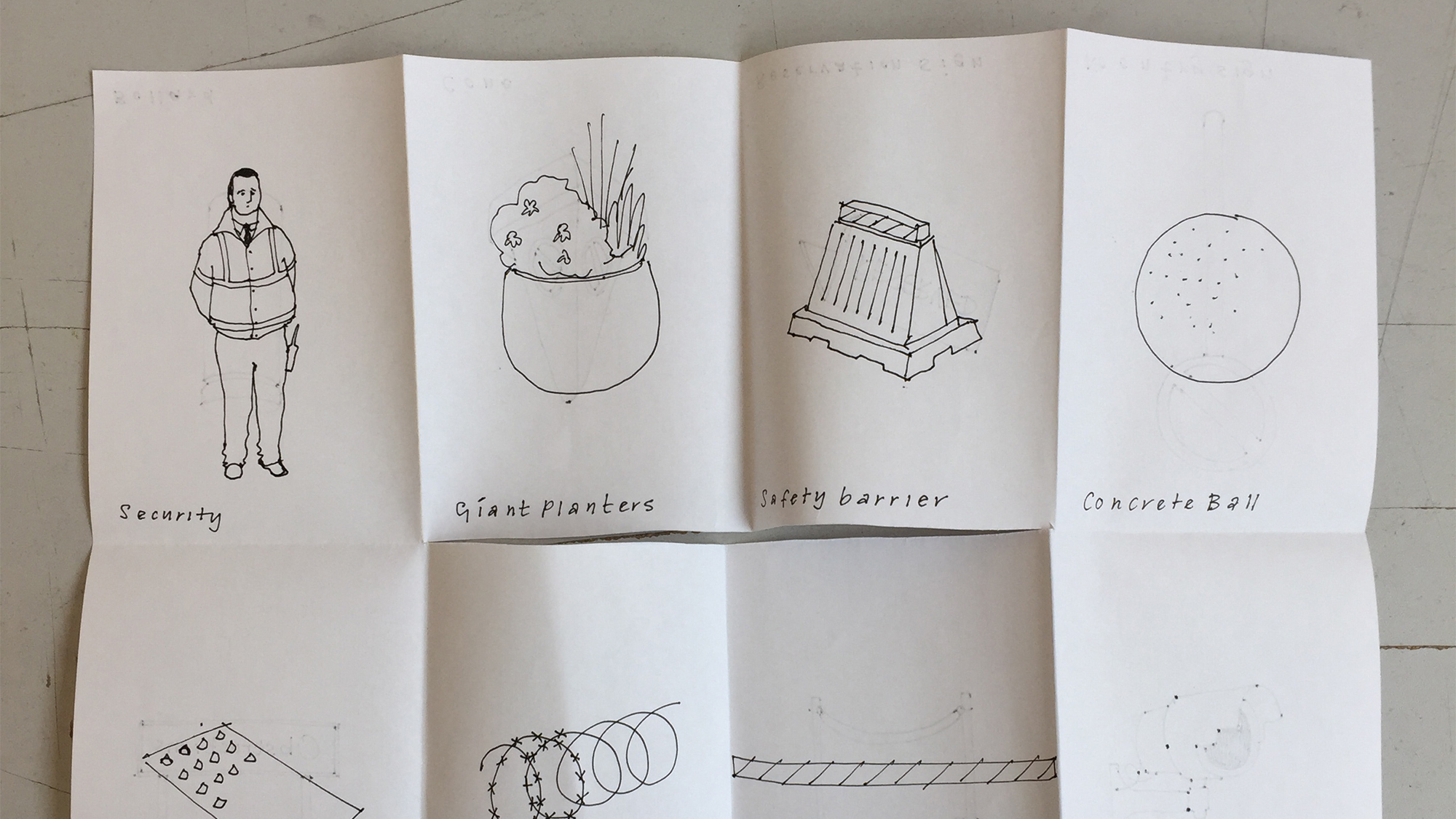



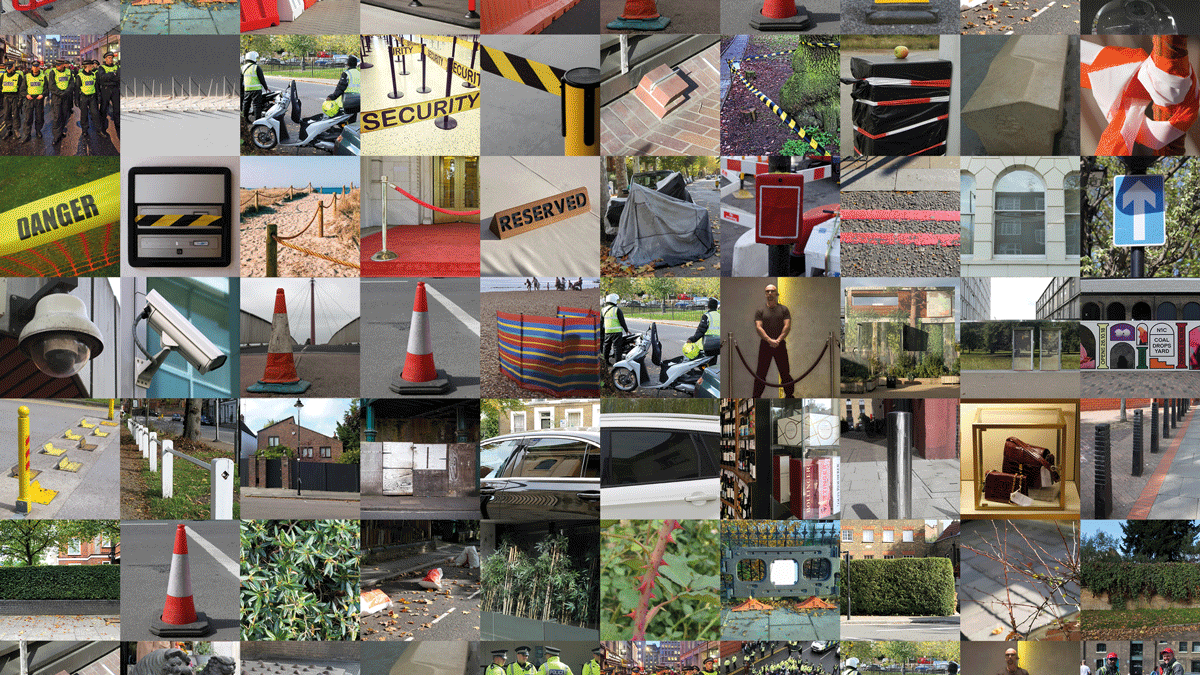

The project developed through workshops, studio experiments, discussion groups and presentations, which I recorded on my Process Blog.
It interrogated what we understand about the term ‘public realm’ and homed in on the presence and visual language of prohibitive objects and people, rather than written signs, in our urban landscape. This culminated in the dissertation publication Obstructions and short film Obstructions of King’s Cross.
It interrogated what we understand about the term ‘public realm’ and homed in on the presence and visual language of prohibitive objects and people, rather than written signs, in our urban landscape. This culminated in the dissertation publication Obstructions and short film Obstructions of King’s Cross.









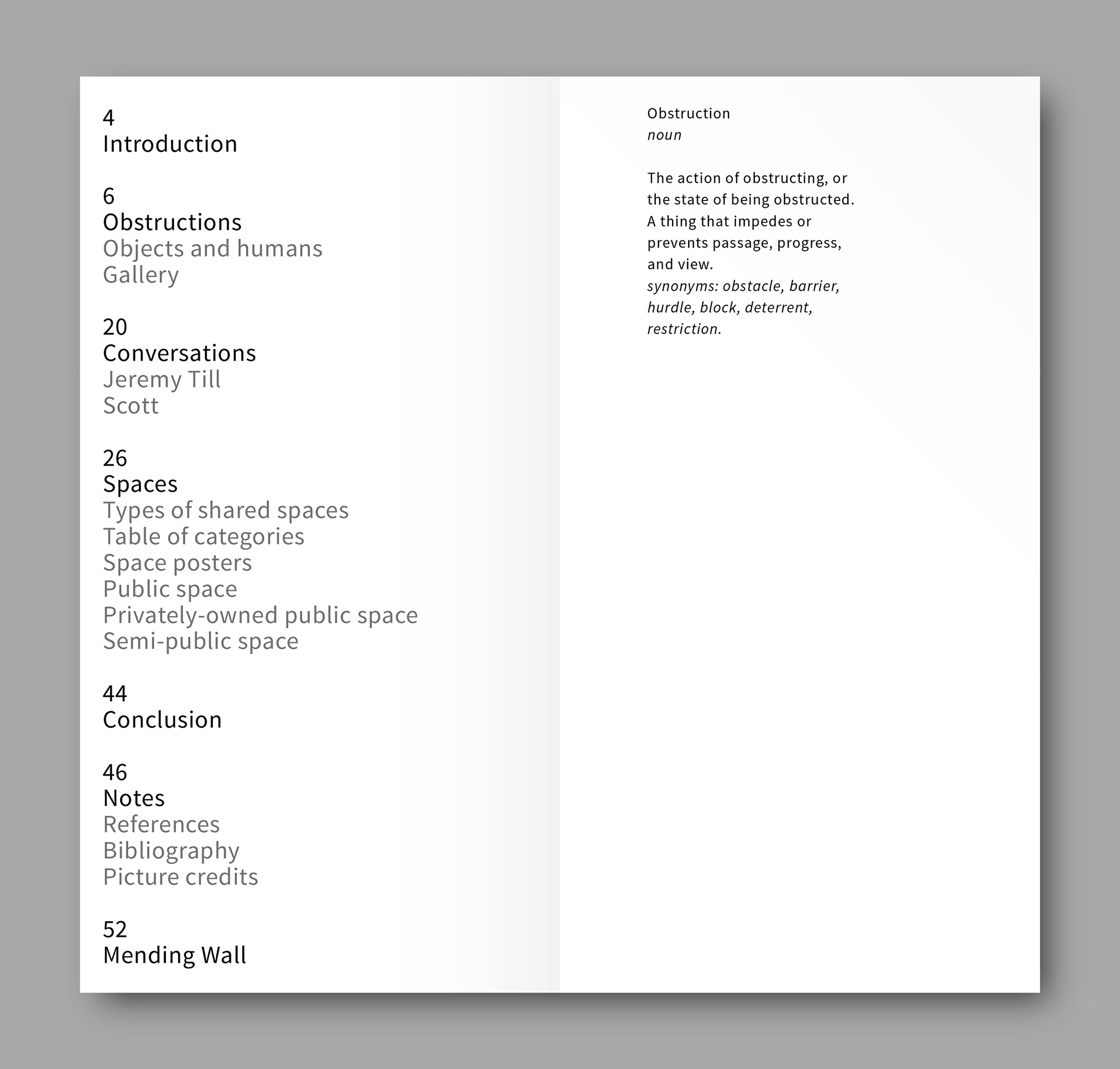





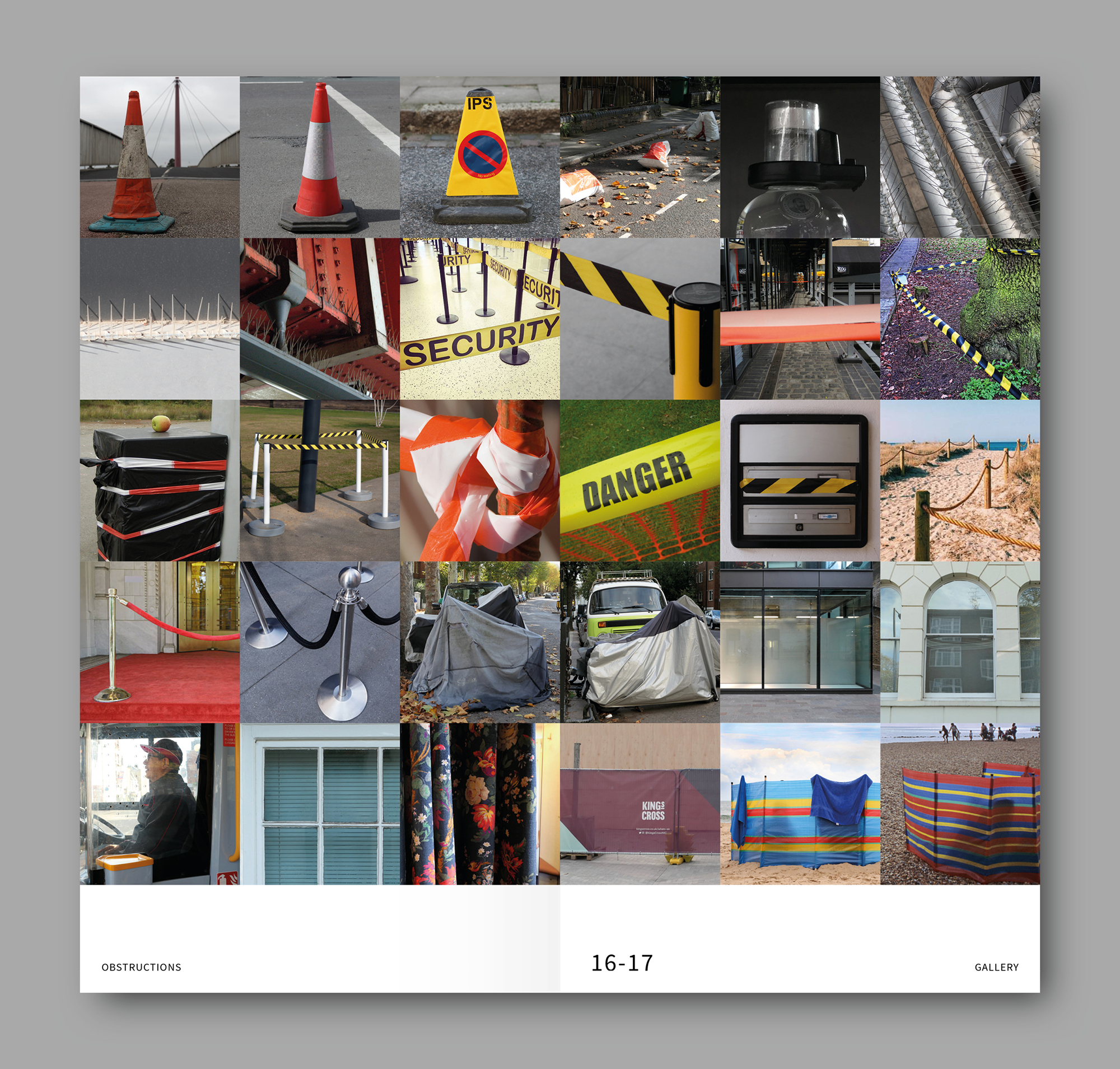


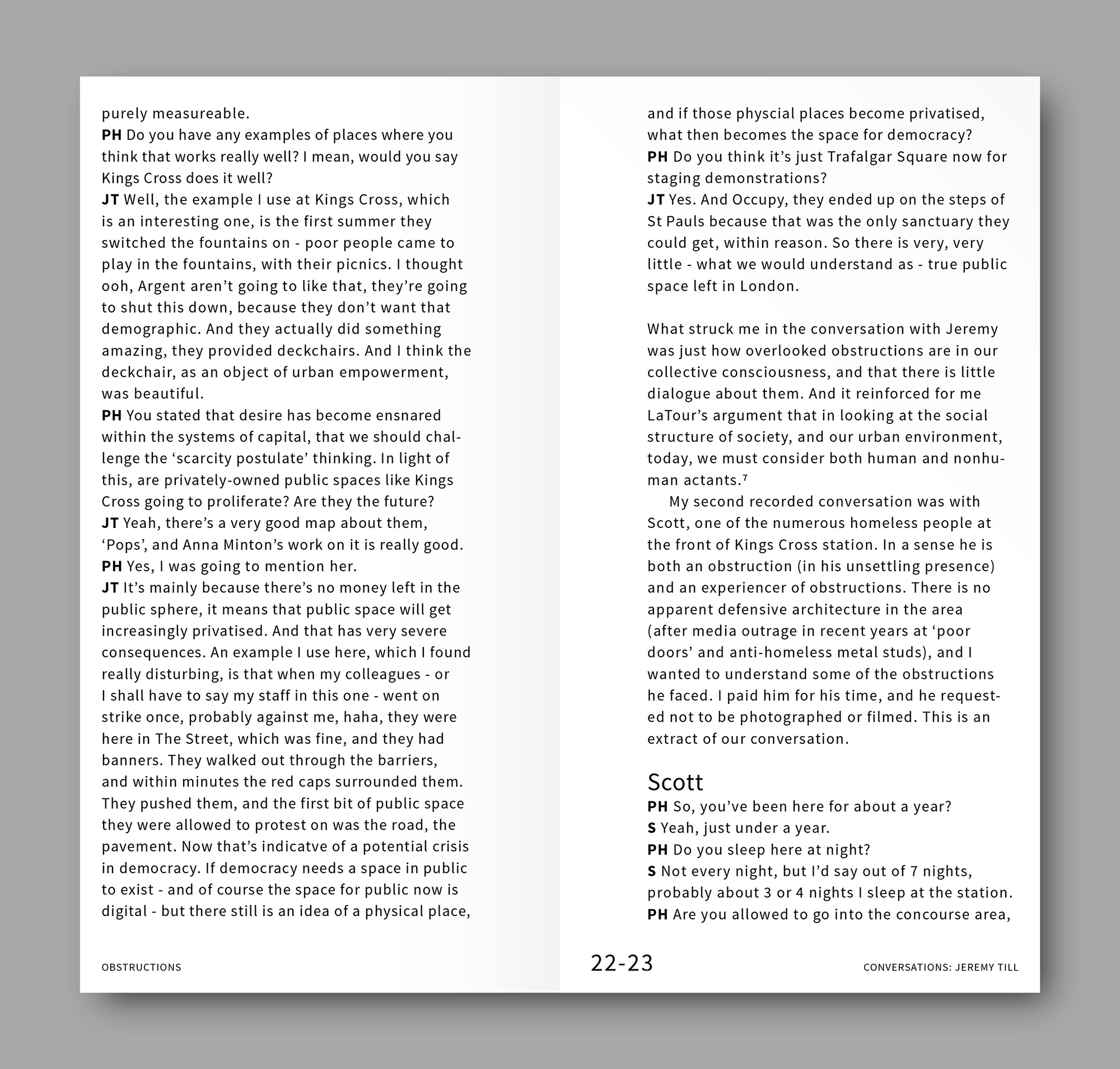
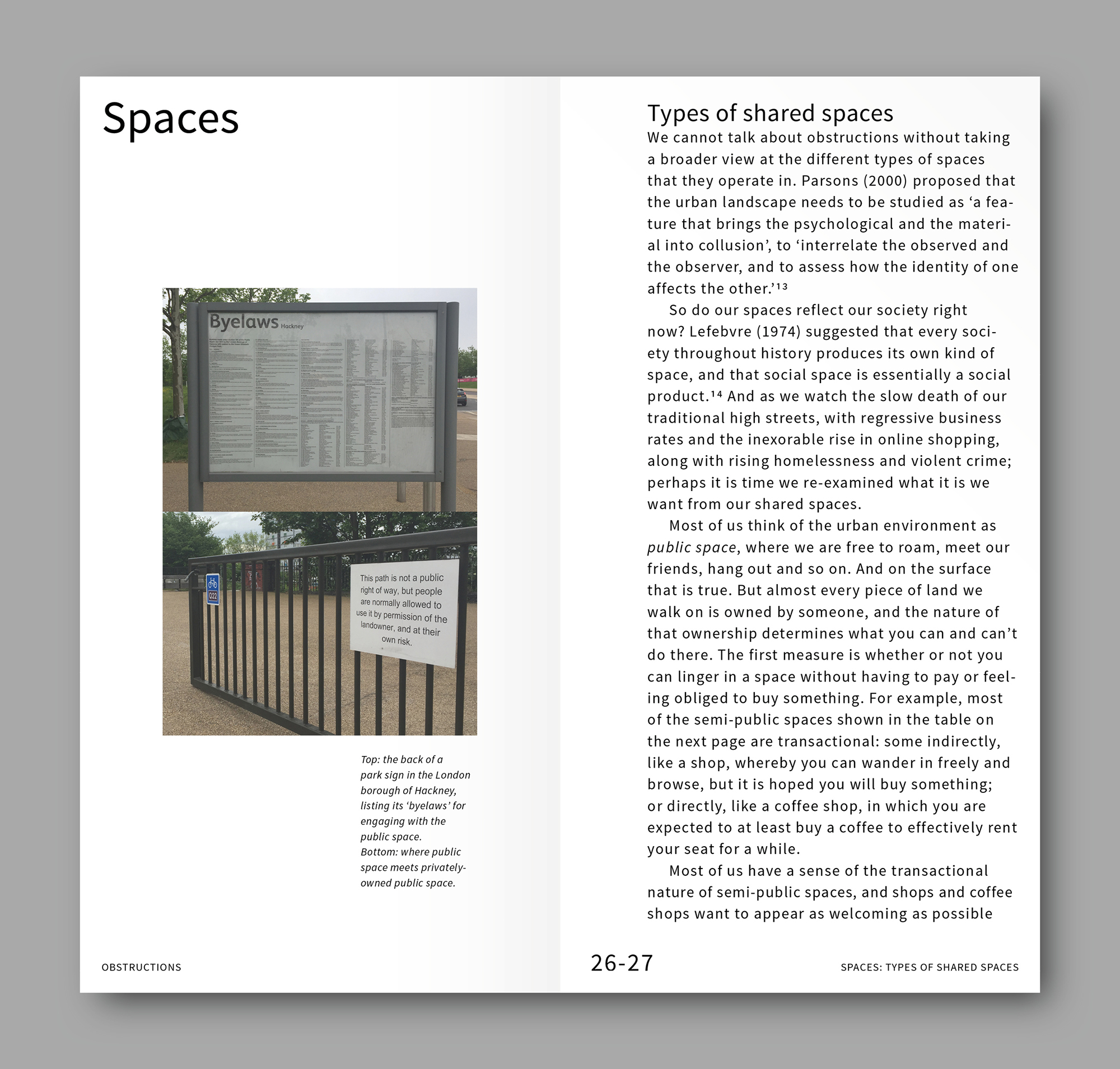
Obstructions proposes that public space can be divided into categories and sub-categories, and it examines the level of ‘transaction’ within each as well as the presence of obstructions.
The gallery pages contain pictures of obstructions informally grouped by their intentions, or ‘prescriptions’ as Bruno Latour described them; as well as their primary material, ie, signs, plastic, tape, wood, glass, planting, stone or human in uniform. The images are placed closely together as a typology, to reveal the normalisation and invisibleness of obstructions, and their scope through variety and ubiquity.
The gallery pages contain pictures of obstructions informally grouped by their intentions, or ‘prescriptions’ as Bruno Latour described them; as well as their primary material, ie, signs, plastic, tape, wood, glass, planting, stone or human in uniform. The images are placed closely together as a typology, to reveal the normalisation and invisibleness of obstructions, and their scope through variety and ubiquity.
Obstructions of King’s Cross concentrates on a London area that has undergone rapid gentrification in recent years. It compares the presence and purpose of obstructions within the area’s three distinct zones: its major transport hubs, privately-owned public spaces, and edges - where signs of its former deprivation can still be seen.